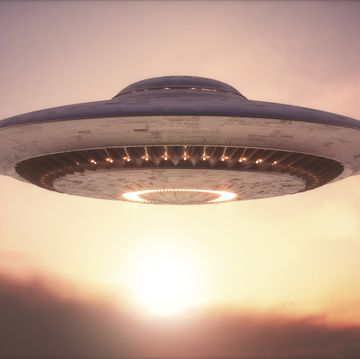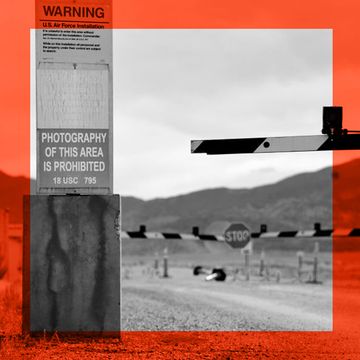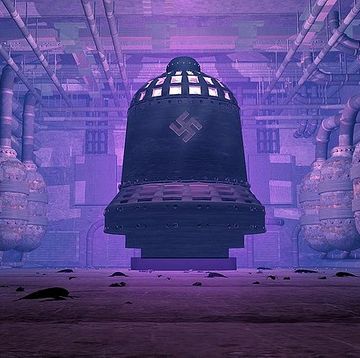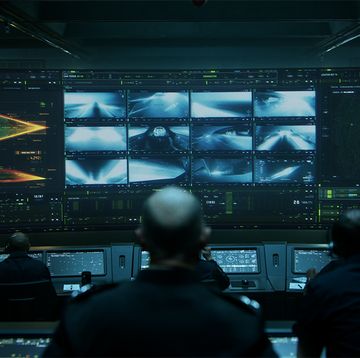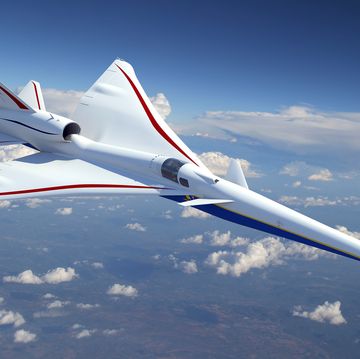- The U.S. Navy has patented technology that can literally draw objects in the sky using plasma.
- The technology is meant to fool heat-seeking missiles, luring them away from their targets.
- The tech could theoretically draw “UFOs” in the sky but there are problems with that explanation.
The U.S. Navy recently patented a method for creating 3D images in midair using plasma. The technology is meant to create a heat source, drawing hostile infrared-guided missiles away from their targets. It could also theoretically be partially responsible for a series of UFO sightings reported by Navy strike fighter pilots in 2004 and again in 2014 to 2015. But the technology falls short of a full explanation.
The technology, first reported by Forbes, is the result of a lengthy research and development effort into missile countermeasures technology. Infrared guided air-to-air missiles are launched by fighter aircraft and home in on the infrared signatures of the target. Currently, aircraft can defeat incoming missiles by dropping flares or blinding the missile’s seeker.
Plasma-based anti-missile technology would use high intensity lasers built into the rear of an aircraft to generate a plasma filament. This plasma filament would in turn generate an infrared signature approximating that of the target aircraft, enough to lure an enemy missile off-course. It could also quickly tune the plasma to match the infrared radiation emitted from the targeted aircraft, making for an even more inviting distraction.
The aspect of the technology that raises eyebrows, however, is the use of laser-induced plasma filaments to create floating images in the air. According to the patent document:
“...it is possible to generate a 2D or 3D volumetric image in space. This is analogous to the rastering of an electron beam in a cathode ray tube based television. In one potential embodiment, a laser system would be mounted on the back of an air vehicle such that the beam can be rastered using optics and mirrors to generate a large ‘ghost’ image in space. This ‘ghost’ image would appear to detract the homing missile away from the tangible air vehicle."
The patent does not make any mention of using plasma filaments to fool anything other than missile seekers. That having been said, the ability to draw objects in the sky would seemingly account for one aspect of the UFO sightings reported by the U.S. Navy in 2004 and 2014-2015. It might be possible to draw the “tic tacs” and “spheres encased in a cube” sighted by the U.S. Navy.
As Forbes points out “it is unlikely the Pentagon would release videos of their own secret weapon in a bizarre double bluff. But other nations may have their own version.” Even the idea that a foreign power with their own plasma filament technology might be responsible is also unlikely—for several reasons. While we have no idea what the objects were, there are aspects to the Navy's sightings that seemingly rule out plasma filament technology.
The U.S. Navy UFO sightings in 2004 and 2014-2015 involved objects that were sighted on visually by pilots and were visible to the AN/ASQ-228 Advanced Targeting Forward Looking Infrared (ATFLIR) sensor and targeting pod. The notion that the ATFLIR could pick up a plasma filament image is unsurprising, as is the notion that a pilot could view an image generated with the technology with the naked eye.
Other things, however, seem to disqualify plasma filament images as the source of “UFOs”. The radar systems of Super Hornet strike fighters, E-2C Hawkeye airborne command and control aircraft, and the guided missile cruiser USS Princeton all reportedly picked up these objects. Plasma, unless it is associated with a physical object, is generally undetectable by radar. Furthermore, the pilots report seeing solid objects—not “ghost images” formed by beams of light.
Another reason the plasma filament theory is unlikely: laser beams degrade with distance. This would necessitate a ship or plane generating an image to fly relatively close to the illusion in a very noticeable way. None of the pilots reported seeing any other aircraft in the vicinity, and in 2004 the USS Princeton detected one of the bizarre objects at 80,000 feet—far higher than even the U-2 spy plane flies.
The technology behind the patent is an innovative way to defend aircraft from incoming missiles. As an explanation for the UFO sightings observed by the Navy over the past 16 years, it falls short.
Something made tracks in the sky alongside Navy planes, but it wasn’t made of plasma.

Kyle Mizokami is a writer on defense and security issues and has been at Popular Mechanics since 2015. If it involves explosions or projectiles, he's generally in favor of it. Kyle’s articles have appeared at The Daily Beast, U.S. Naval Institute News, The Diplomat, Foreign Policy, Combat Aircraft Monthly, VICE News, and others. He lives in San Francisco.




